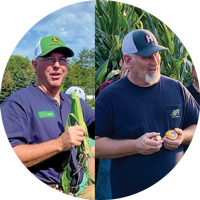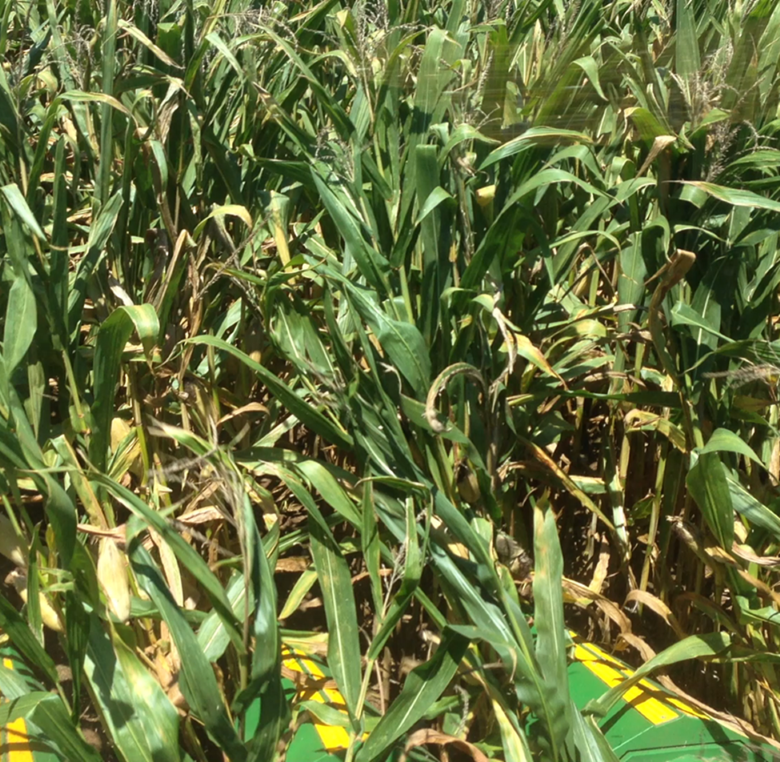Of all the factors that influence crop yield, only so many are within a no-tiller’s control.
Randy Dowdy and David Hula would know. Dowdy is the soybean yield world record holder, which he achieved on his Valdosta, Ga., farm with a crop that hit 190 bushels per acre in 2019. Hula set the corn yield record the same year, raising 616 bushels on his farm in Charles City, Va.
Despite all the variables Mother Nature throws at growers, the two say there are likely more factors that no-tillers can control that they’re currently not managing. Or they may be factors they are controlling, but they’re not doing everything in their power to improve their success.
At the 2023 National No-Tillage Conference, Hula and Dowdy shared these four things within a no-tiller's control that can influence yield and profit potential:
Controllable Factor #1: Fertility
Hula says that after land, fertilizer is likely a no-tiller’s biggest expense. So it pays to make sure you’re getting a 100% return on your investment. That starts with knowing what fertility you already have in your soils by taking soil samples. Hula pulls his on 1-acre grids.
“Let’s get down to the details and say, ‘We want to fine-tune this,’” he says. “Pulling 1-acre grids gives us a better map of how we can fix it.”
The next step is to make sure soil pH is where it needs to be so nutrients are available, and correcting it if necessary.
Once no-tillers have an understanding of how many nutrients are available in the soil, they can decide how much more they need to apply based on their yield goals, and then when and how they’re going to apply it.
The biggest issue Hula and Dowdy see no-tillers make is not placing nutrients where roots are growing. The only way to know if fertilizer is reaching the roots is to do a root dig and see where they are growing.
“When we spend money, we need a return on investment,” Dowdy says. “How are you going to get it if there aren’t any roots where you apply it? How do you know if the roots are getting all the fertilizer that you broadcast?”
He acknowledges that it is faster to hire the co-op to come out and broadcast fertilizer, but Dowdy reminds no-tillers that it isn't a race to finish. It’s a race to get it done correctly and maximize every dollar spent.

Don’t Try to Plant in 7 Days
As Randy Dowdy explained in the article “Hula & Dowdy's 5 Ways to Become a More Profitable No-Tiller,” he doesn’t want to see no-tillers trying to plant their whole crop in 7 days because if the crop doesn’t emerge in that time, growers may miss out on planting problems that they could avoid on other acres that hadn’t been planted yet. Extending planting out a little longer also offers the benefit of making sure you can harvest your corn at 25% moisture. “Some of you say, ‘Well, we dry all we can as fast as we can, but we just can’t get it all at 25%,’” Dowdy says. “That’s another reason not to plant it in 7 days. You can’t harvest it in 7 days, but you like to plant it in 7 days. If it’s worth 3 bushels a point, are you OK giving away free money?”
Controllable Factor #2: Water
Dowdy says no-tillers can’t control how much Mother Nature is going to provide in rainfall. But if they have access to water and can install irrigation, then they now have some control over an otherwise uncontrollable factor.
He points out that corn plant water removal from grain fill to harvest — around 1,300 growing degree units (GDUs) to 2,400 GDUs — is 0.34 inches per day for 100-120 day hybrids. Over a week, that’s about 2.4 inches of water removed from the soil profile.
He and Hula encourage anyone who has the option of irrigating to invest in it. Hula adds that there are solutions for growers who may not be suited for central pivots, like drip tape or the autonomous 360 RAIN unit from Precision Planting.
The same is true for growers who get too much water. Pattern tiling costs around $750-1,000 per acre and can usually pay for itself in 5 years. It also increases a land’s value.
Given the payoff for both irrigation and drainage, the two say there’s no reason why growers should hesitate to make the investment.
“If you spend the money on fertilizer, seed, fungicides and chemicals, control a controllable,” Dowdy says. “If you need drain tile, put it in. If you need water, consider it.”
Controllable Factor #3: Harvest Time
Dowdy says that Purdue University once proved that with all costs considered, the maximum ROI growers can get on corn is when it’s harvested at 25% moisture. He adds that for every percentage point that drops, growers lose about 3 bushels per acre. That means if a no-tiller harvests at 20%, they’ve missed out on 15 bushels.
But the reason most growers don’t harvest it at 25% is because it’s expensive to dry it.
“Farmers need to quit worrying about ways to save money,” Dowdy says. “They need to worry about ways to make money.”
For no-tillers who are skeptical about how much harvesting high moisture corn can pay off, Dowdy says to test it in the fall. Make one pass with your combine when the corn’s at 25% moisture, dry it, keep track of how much it cost to dry it, and see how much it yielded. Then make a comparison. Make another combine pass when you normally would, see how much it yields, and do the math. Dowdy is confident you’ll see a financial benefit to harvesting earlier.
Having a grain bin system also pays because most years there will be an opportunity to capture a little more money on a premium, so it’s nice to be able to store it, Dowdy adds.
The other benefit of harvesting at high moisture is that it helps with residue management.
Hula says that for any no-tillers doing that side-by-side trial of harvesting at different moistures — especially for those farther north who struggle to get enough heat for decomposition — should take note of the difference in residue breakdown between the 2 passes the next growing season.
Dowdy points out that a faster residue breakdown is also beneficial for fertility.
“Wouldn’t you like to get some of that fertilizer mineralizing faster that’s tied up in all that fodder above ground and being available for next year’s crop?” he asks. “Wouldn’t you like to get that back into the availability zone as opposed to just laying out here on top of the ground?”
Controllable Factor #4: Be Willing to Change
Hula recalls attending a talk by Francis Childs, the late high-yield corn pioneer. The first thing Childs told growers to do to be successful is to have a positive attitude.
“I’m like, ‘What in the world?’” Hula says. “You don’t need a positive attitude to raise corn. But I know what he meant — you have to be willing to change. That’s what we’re wanting you all to do — change. At the end of the day, you’ve got to get out there and evaluate what you’ve done.”
He adds the current economy costs growers a fortune to raise an acre of corn. Fertilizer, seed and crop protection products are all high. Which means now is the time for no-tillers to be really focused on what works.
“There’s nothing worse than you buying something that didn’t work and didn’t perform,” Hula says. “Because if you did something that didn’t work, you just wasted money.”
Hula and Dowdy want no-tillers to think differently about what they’re doing. They hope that no-tillers will reevaluate what’s in their control and whether those controllables are paying off, and be willing to make changes to become a more profitable farmer.








Post a comment
Report Abusive Comment